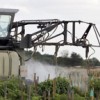 Proper herbicide application is critical for fruit and vegetable growers to effectively manage weeds. Improper herbicide application may lead to herbicide loss from the targeted area, increased crop injury, and reduced weed control. Growers need to take into account a number of factors before and during application in any crop to ensure the herbicide is effective. Herbicide efficacy is greatly affected by timing and environmental conditions. Although complete weed control is not always possible, even slight reductions in weed populations can greatly enhance productivity in fruit and vegetable crops. This 4-page fact sheet reviews techniques and processes to help growers properly apply herbicides. Understanding the processes and applying the following techniques will help to increase the overall efficacy of herbicides in fruit and vegetable production. Written by C. E. Rouse and P. J. Dittmar, and published by the UF Department of Horticultural Sciences, May 2013.
Proper herbicide application is critical for fruit and vegetable growers to effectively manage weeds. Improper herbicide application may lead to herbicide loss from the targeted area, increased crop injury, and reduced weed control. Growers need to take into account a number of factors before and during application in any crop to ensure the herbicide is effective. Herbicide efficacy is greatly affected by timing and environmental conditions. Although complete weed control is not always possible, even slight reductions in weed populations can greatly enhance productivity in fruit and vegetable crops. This 4-page fact sheet reviews techniques and processes to help growers properly apply herbicides. Understanding the processes and applying the following techniques will help to increase the overall efficacy of herbicides in fruit and vegetable production. Written by C. E. Rouse and P. J. Dittmar, and published by the UF Department of Horticultural Sciences, May 2013.
http://edis.ifas.ufl.edu/hs1219
Tag: Horticultural Sciences Department
Growing Potatoes in the Florida Home Garden (HS993/HS183)
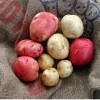 The Irish potato is a cool-season crop. A recently grown and harvested potato exhibits different flavor profiles from one that has been in storage or on a grocery shelf for an extended period. For example, in storage, the starches in potatoes convert to sugars, resulting in a less desirable texture and taste. “New” potato flavor can be achieved in the home garden by following a few growing recommendations. This 9-page fact sheet was written by Christian T. Christensen, Libby R. Rens, Jeffrey E. Pack, Lincoln Zotarelli, Chad Hutchinson, Wendy Dahl, Doug Gergela, and James M. White, and published by the UF Department of Horticultural Sciences, April 2013.
The Irish potato is a cool-season crop. A recently grown and harvested potato exhibits different flavor profiles from one that has been in storage or on a grocery shelf for an extended period. For example, in storage, the starches in potatoes convert to sugars, resulting in a less desirable texture and taste. “New” potato flavor can be achieved in the home garden by following a few growing recommendations. This 9-page fact sheet was written by Christian T. Christensen, Libby R. Rens, Jeffrey E. Pack, Lincoln Zotarelli, Chad Hutchinson, Wendy Dahl, Doug Gergela, and James M. White, and published by the UF Department of Horticultural Sciences, April 2013.
http://edis.ifas.ufl.edu/hs183
Produccion de Hortalizas en Ambientes Protegidos: Medios de Siembra y Contenedores (HS1216)
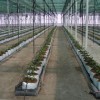 Este documento contiene informacion sobre producción en suelos: Desinfección, mejoramiento, cultivos de cobertura, acolchados (mulches); y tipos de contenedores. This 6-page fact sheet was written by Bielinski M. Santos and Henner A. Obregon-Olivas, and published by the UF Department of Horticultural Sciences, March 2013.
Este documento contiene informacion sobre producción en suelos: Desinfección, mejoramiento, cultivos de cobertura, acolchados (mulches); y tipos de contenedores. This 6-page fact sheet was written by Bielinski M. Santos and Henner A. Obregon-Olivas, and published by the UF Department of Horticultural Sciences, March 2013.
http://edis.ifas.ufl.edu/hs1216
Subsurface Drip Irrigation (SDI) for Enhanced Water Distribution: SDI – Seepage Hybrid System (HS1217)
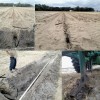 In terms of water use efficiency, the traditional seepage irrigation systems commonly used in areas with high water tables are one of the most inefficient methods of irrigation, though some irrigation management practices can contribute to better soil moisture uniformity. Subsurface drip irrigation systems apply water below the soil surface by microirrigation, improving the water distribution and time required to raise the water table for seepage irrigation. This 6-page fact sheet was written by Lincoln Zotarelli, Libby Rens, Charles Barrett, Daniel J. Cantliffe, Michael D. Dukes, Mark Clark, and Steven Lands, and published by the UF Department of Horticultural Sciences, March 2013.
In terms of water use efficiency, the traditional seepage irrigation systems commonly used in areas with high water tables are one of the most inefficient methods of irrigation, though some irrigation management practices can contribute to better soil moisture uniformity. Subsurface drip irrigation systems apply water below the soil surface by microirrigation, improving the water distribution and time required to raise the water table for seepage irrigation. This 6-page fact sheet was written by Lincoln Zotarelli, Libby Rens, Charles Barrett, Daniel J. Cantliffe, Michael D. Dukes, Mark Clark, and Steven Lands, and published by the UF Department of Horticultural Sciences, March 2013.
http://edis.ifas.ufl.edu/hs1217
Allelopathy: How Plants Suppress Other Plants (HS944/HS186)
 Allelopathy refers to the beneficial or harmful effects of one plant on another plant, both crop and weed species, from the release of biochemicals, known as allelochemicals, from plant parts by leaching, root exudation, volatilization, residue decomposition, and other processes in both natural and agricultural systems. This 5-page fact sheet introduces the concept of allelopathy and mentions potential applications as an alternative weed management strategy. Written by James J. Ferguson, Bala Rathinasabapathi, and Carlene A. Chase, and published by the UF Department of Horticultural Sciences, March 2013.
Allelopathy refers to the beneficial or harmful effects of one plant on another plant, both crop and weed species, from the release of biochemicals, known as allelochemicals, from plant parts by leaching, root exudation, volatilization, residue decomposition, and other processes in both natural and agricultural systems. This 5-page fact sheet introduces the concept of allelopathy and mentions potential applications as an alternative weed management strategy. Written by James J. Ferguson, Bala Rathinasabapathi, and Carlene A. Chase, and published by the UF Department of Horticultural Sciences, March 2013.
http://edis.ifas.ufl.edu/hs186
Opciones de gestion agronomica para la variabilidad y para el cambio climatico: El riego localizado (HS1212)
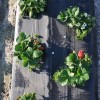 Esta publicación se enfoca en el uso del riego localizado para mejorar los sistemas de producción. This 5-page fact sheet was written by Lincoln Zotarelli, Clyde Fraisse, and Daniel Dourte, and published by the UF Department of Horticultural Sciences, January 2013.
Esta publicación se enfoca en el uso del riego localizado para mejorar los sistemas de producción. This 5-page fact sheet was written by Lincoln Zotarelli, Clyde Fraisse, and Daniel Dourte, and published by the UF Department of Horticultural Sciences, January 2013.
http://edis.ifas.ufl.edu/hs1212
Trastornos fisiologicos de la papa: Centro marron y Corazon hueco (HS1214)
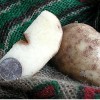 El centro marrón y el corazón hueco son trastornos fisiológicos internos no-infecciosos del tubérculo de la papa. Un centro marrón (también llamado corazón incipiente y hueco, corazón marrón o centro de azúcar) se caracteriza por una región muerta en las células de la médula de los tubérculos lo que resulta en un tejido de color marrón. This 3-page fact sheet was written by L. Zotarelli, C. Hutchinson, S. Byrd, D. Gergela, y D. L. Rowland, and published by the UF Department of Horticultural Sciences, January 2013.
El centro marrón y el corazón hueco son trastornos fisiológicos internos no-infecciosos del tubérculo de la papa. Un centro marrón (también llamado corazón incipiente y hueco, corazón marrón o centro de azúcar) se caracteriza por una región muerta en las células de la médula de los tubérculos lo que resulta en un tejido de color marrón. This 3-page fact sheet was written by L. Zotarelli, C. Hutchinson, S. Byrd, D. Gergela, y D. L. Rowland, and published by the UF Department of Horticultural Sciences, January 2013.
http://edis.ifas.ufl.edu/hs1214
Manejo de malezas en las papas (HS1213)
 Las malezas causan problemas en la producción de patata en Florida y puede reducir rendimientos a través de competencia directa por la luz, la humedad y los nutrientes, o por albergar insectos y enfermedades que atacan las patatas. This 4-page fact sheet was written by Peter Dittmar, Seth Byrd, Lincoln Zotarelli, Diane Rowland, and William Stall, and published by the UF Department of Horticultural Sciences, January 2013.
Las malezas causan problemas en la producción de patata en Florida y puede reducir rendimientos a través de competencia directa por la luz, la humedad y los nutrientes, o por albergar insectos y enfermedades que atacan las patatas. This 4-page fact sheet was written by Peter Dittmar, Seth Byrd, Lincoln Zotarelli, Diane Rowland, and William Stall, and published by the UF Department of Horticultural Sciences, January 2013.
http://edis.ifas.ufl.edu/hs1213
Trastornos fisiologicos de la papa: Grietas de Crecimiento (HS1211)
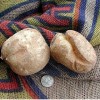 Las grietas de crecimiento son un trastorno fisiológigo externo no infeccioso del tubérculo de la papa en el que el tubérculo se agrieta durante el crecimiento. La bendidura se cura, pero deja una fisura en el tubérculo. This 3-page fact sheet was written by L. Zotarelli, C. Hutchinson, S. Byrd, D. Gergela, y D. L. Rowland, and published by the UF Department of Horticultural Sciences, January 2013.
Las grietas de crecimiento son un trastorno fisiológigo externo no infeccioso del tubérculo de la papa en el que el tubérculo se agrieta durante el crecimiento. La bendidura se cura, pero deja una fisura en el tubérculo. This 3-page fact sheet was written by L. Zotarelli, C. Hutchinson, S. Byrd, D. Gergela, y D. L. Rowland, and published by the UF Department of Horticultural Sciences, January 2013.
http://edis.ifas.ufl.edu/hs1211
Construccion de Sistema Hidroponico Flotante (HS1210)
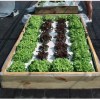 Los aztecas maravillaron a los conquistadores españoles con sus huertos flotantes, y hoy, 500 años después, usted puede impresionar a sus amigos y vecinos con el suyo. This 4-page fact sheet was written by Horticultural Sciences, and published by the UF Department of J. Bosques, M. Sweat, R. Tyson, y R. Hochmuth, January 2013.
Los aztecas maravillaron a los conquistadores españoles con sus huertos flotantes, y hoy, 500 años después, usted puede impresionar a sus amigos y vecinos con el suyo. This 4-page fact sheet was written by Horticultural Sciences, and published by the UF Department of J. Bosques, M. Sweat, R. Tyson, y R. Hochmuth, January 2013.
http://edis.ifas.ufl.edu/hs1210
Beyond 'Earlygold': Juice Color and Quality of Additional Early-Maturing Sweet Orange Selections (HS1209)
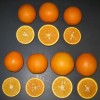 This publication summarizes 5 years of juice quality information about 15 early-maturing sweet orange selections introduced to Florida and evaluated after ‘Earlygold’ became available. The trees were grown at a central Florida and Indian River location for about 10 years. Also presented are observations on tree development summarized across both locations and two rootstocks. This 8-page fact sheet was written by Horticultural Sciences, and published by the UF Department of William S. Castle, January 2013.
This publication summarizes 5 years of juice quality information about 15 early-maturing sweet orange selections introduced to Florida and evaluated after ‘Earlygold’ became available. The trees were grown at a central Florida and Indian River location for about 10 years. Also presented are observations on tree development summarized across both locations and two rootstocks. This 8-page fact sheet was written by Horticultural Sciences, and published by the UF Department of William S. Castle, January 2013.
http://edis.ifas.ufl.edu/hs1209
2013 Florida Blueberry Integrated Pest Management Guide (HS1156/HS380)
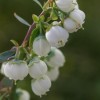 Recommendations are based on information from the manufacturer’s label and performance data from research and Extension field tests. This 31-page pest management guide was adapted for Florida by Jeffrey G. Williamson, Philip F. Harmon, Oscar E. Liburd, and Peter Dittmar, from the Southeast Regional Blueberry Integrated Management Guide, and published by the UF Department of Horticultural Sciences, November 2012.
Recommendations are based on information from the manufacturer’s label and performance data from research and Extension field tests. This 31-page pest management guide was adapted for Florida by Jeffrey G. Williamson, Philip F. Harmon, Oscar E. Liburd, and Peter Dittmar, from the Southeast Regional Blueberry Integrated Management Guide, and published by the UF Department of Horticultural Sciences, November 2012.
http://edis.ifas.ufl.edu/hs380
Understanding and Applying Chelated Fertilizers Effectively Based on Soil pH (HS1208)
 Plant nutrients are one of the environmental factors essential for crop growth and development. Nutrient management is crucial for optimal productivity in commercial crop production. Those nutrients in concentrations of ≤ 100 parts per million (ppm) in plant tissues are described as micronutrients and include iron (Fe), zinc (Zn), manganese (Mn), copper (Cu), boron (B), chlorine (Cl), molybdenum (Mo), and nickel (Ni). Micronutrients such as Fe, Mn, Zn, and Cu are easily oxidized or precipitated in soil, and their utilization is, therefore, not very efficient. Chelated fertilizers have been developed to increase micronutrient utilization efficiency. This 5-page fact sheet provides an overview of chelated fertilizers and considerations for their use to county Extension faculty, growers, and students who are interested in commercial crop production. Written by Guodong Liu, Edward Hanlon, and Yuncong Li, and published by the UF Department of Horticultural Sciences, November 2012.
Plant nutrients are one of the environmental factors essential for crop growth and development. Nutrient management is crucial for optimal productivity in commercial crop production. Those nutrients in concentrations of ≤ 100 parts per million (ppm) in plant tissues are described as micronutrients and include iron (Fe), zinc (Zn), manganese (Mn), copper (Cu), boron (B), chlorine (Cl), molybdenum (Mo), and nickel (Ni). Micronutrients such as Fe, Mn, Zn, and Cu are easily oxidized or precipitated in soil, and their utilization is, therefore, not very efficient. Chelated fertilizers have been developed to increase micronutrient utilization efficiency. This 5-page fact sheet provides an overview of chelated fertilizers and considerations for their use to county Extension faculty, growers, and students who are interested in commercial crop production. Written by Guodong Liu, Edward Hanlon, and Yuncong Li, and published by the UF Department of Horticultural Sciences, November 2012.
http://edis.ifas.ufl.edu/hs1208
Rootstocks for Florida Stone Fruit (HS1110/HS366)
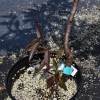 Rootstocks have been used in many tree fruit systems to provide growth advantages or pest or disease resistance without affecting productivity and fruit quality. In Florida, stone fruit are grown on rootstocks that specifically provide pest resistance to the peach root-knot nematode. Although several root-knot nematode-resistant rootstocks are available for stone fruit grown in other locations and climates, ‘Flordaguard’ peach rootstock is currently recommended for stone fruit production in Florida. This 5-page fact sheet was written by M. Olmstead, J. Chaparro, and J. Ferguson, and published by the UF Department of Horticultural Sciences, November 2012.
Rootstocks have been used in many tree fruit systems to provide growth advantages or pest or disease resistance without affecting productivity and fruit quality. In Florida, stone fruit are grown on rootstocks that specifically provide pest resistance to the peach root-knot nematode. Although several root-knot nematode-resistant rootstocks are available for stone fruit grown in other locations and climates, ‘Flordaguard’ peach rootstock is currently recommended for stone fruit production in Florida. This 5-page fact sheet was written by M. Olmstead, J. Chaparro, and J. Ferguson, and published by the UF Department of Horticultural Sciences, November 2012.
http://edis.ifas.ufl.edu/hs366
Soil pH Range for Optimum Commercial Vegetable Production (HS1207)
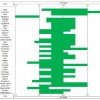 Soil pH affects nutrient bioavailability by controlling the chemical forms of nutrients. This 11-page fact sheet provides information about soil pH basics to commercial growers, county Extension agents, and college students specializing in vegetable production. Written by Guodong Liu and Edward Hanlon, and published by the UF Department of Horticultural Sciences, October 2012.
Soil pH affects nutrient bioavailability by controlling the chemical forms of nutrients. This 11-page fact sheet provides information about soil pH basics to commercial growers, county Extension agents, and college students specializing in vegetable production. Written by Guodong Liu and Edward Hanlon, and published by the UF Department of Horticultural Sciences, October 2012.
http://edis.ifas.ufl.edu/hs1207
Production Systems: Florida Greenhouse Vegetable Production Handbook, Vol 3 (HS785/CV263)
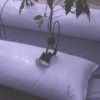 Worldwide, commercial greenhouse vegetable producers currently use numerous production systems. Among the more prevalent include lay-flat bag or upright container culture, trough culture, rockwool, vertical culture, nutrient film technique (NFT), and ground (in-soil) culture. Many modifications of these basic production systems are presently in use, and most are appropriate for Florida, except for unamended ground culture. This 8-page fact sheet was written by Dan Fenneman, Michael Sweat, George Hochmuth, and Robert Hochmuth, and published by the UF Department of Horticultural Sciences, October 2012.
Worldwide, commercial greenhouse vegetable producers currently use numerous production systems. Among the more prevalent include lay-flat bag or upright container culture, trough culture, rockwool, vertical culture, nutrient film technique (NFT), and ground (in-soil) culture. Many modifications of these basic production systems are presently in use, and most are appropriate for Florida, except for unamended ground culture. This 8-page fact sheet was written by Dan Fenneman, Michael Sweat, George Hochmuth, and Robert Hochmuth, and published by the UF Department of Horticultural Sciences, October 2012.
http://edis.ifas.ufl.edu/cv263
Alternative Greenhouse Crops: Florida Greenhouse Vegetable Production Handbook, Vol 3 (HS791/CV272)
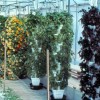 In 2012, it was estimated that 500 acres or more of all edible crops were being grown in some type of protected culture in Florida. This 13-page fact sheet discusses some of the alternative or specialty crops being grown and marketed. Written by R. Hochmuth and D. Cantliffe, and published by the UF Department of Horticultural Sciences, October 2012.
In 2012, it was estimated that 500 acres or more of all edible crops were being grown in some type of protected culture in Florida. This 13-page fact sheet discusses some of the alternative or specialty crops being grown and marketed. Written by R. Hochmuth and D. Cantliffe, and published by the UF Department of Horticultural Sciences, October 2012.
http://edis.ifas.ufl.edu/cv272
Fertigation for Vegetables: A Practical Guide for Small Fields (HS1206)
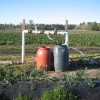
More and more farmers are growing small crops of fruits and vegetables for specialty local markets. They commonly grow several crops at different stages of development at the same time so they have a variety of produce to sell to customers. This forces farmers to make several fertilizer calculations because of their diverse crop demands, because water and nutrient requirements vary according to the crop and stage of development. This 7-page fact sheet helps growers correctly interpret fertilizer recommendations and calculate accurate fertilizer amounts to be used based on crop nutrient requirements. Written by Jim DeValerio, David Nistler, Robert Hochmuth, and Eric Simonne, and published by the UF Department of Horticultural Sciences, October 2012.
http://edis.ifas.ufl.edu/hs1206
Protected Culture for Vegetable and Small Fruit Crops: The Soilless Trench System (HS1204)
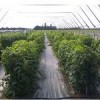 Vegetable and small fruit crop production under protective structures, such as greenhouses, high tunnels, and shade houses, often requires using soilless media to mitigate the impact of soilborne diseases, nematodes, and weeds, and it helps with management of fertilization and irrigation. Regardless of the nature and property of the media, they need to be held in containers to avoid direct contact with the soil or to elevate plants above the ground. An alternative to purchasing containers is building a soilless trench system for production of certain vegetables and small fruit crops. This 3-page fact sheet was written by Bielinski M. Santos and Teresa P. Salame-Donoso, and published by the UF Department of Horticultural Sciences, August 2012.
Vegetable and small fruit crop production under protective structures, such as greenhouses, high tunnels, and shade houses, often requires using soilless media to mitigate the impact of soilborne diseases, nematodes, and weeds, and it helps with management of fertilization and irrigation. Regardless of the nature and property of the media, they need to be held in containers to avoid direct contact with the soil or to elevate plants above the ground. An alternative to purchasing containers is building a soilless trench system for production of certain vegetables and small fruit crops. This 3-page fact sheet was written by Bielinski M. Santos and Teresa P. Salame-Donoso, and published by the UF Department of Horticultural Sciences, August 2012.
http://edis.ifas.ufl.edu/hs1204
Potato Physiological Disorders – Internal Heat Necrosis (HS1145/HS395)
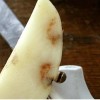 Internal heat necrosis is a physiological disorder that causes an unacceptable browning of the tuber tissue and can cause economic losses to the grower. The three leading suspected causes of IHN in tubers are high soil temperature, inadequate soil moisture, and suboptimal plant nutrition, or a combination of these factors. This 3-page fact sheet was written by Lincoln Zotarelli, Christine M. Worthington,Chad M. Hutchinson, Seth Byrd, Douglas Gergela, and Diane Rowland, and published by the UF Department of Horticultural Sciences, July 2012. http://edis.ifas.ufl.edu/hs395
Internal heat necrosis is a physiological disorder that causes an unacceptable browning of the tuber tissue and can cause economic losses to the grower. The three leading suspected causes of IHN in tubers are high soil temperature, inadequate soil moisture, and suboptimal plant nutrition, or a combination of these factors. This 3-page fact sheet was written by Lincoln Zotarelli, Christine M. Worthington,Chad M. Hutchinson, Seth Byrd, Douglas Gergela, and Diane Rowland, and published by the UF Department of Horticultural Sciences, July 2012. http://edis.ifas.ufl.edu/hs395